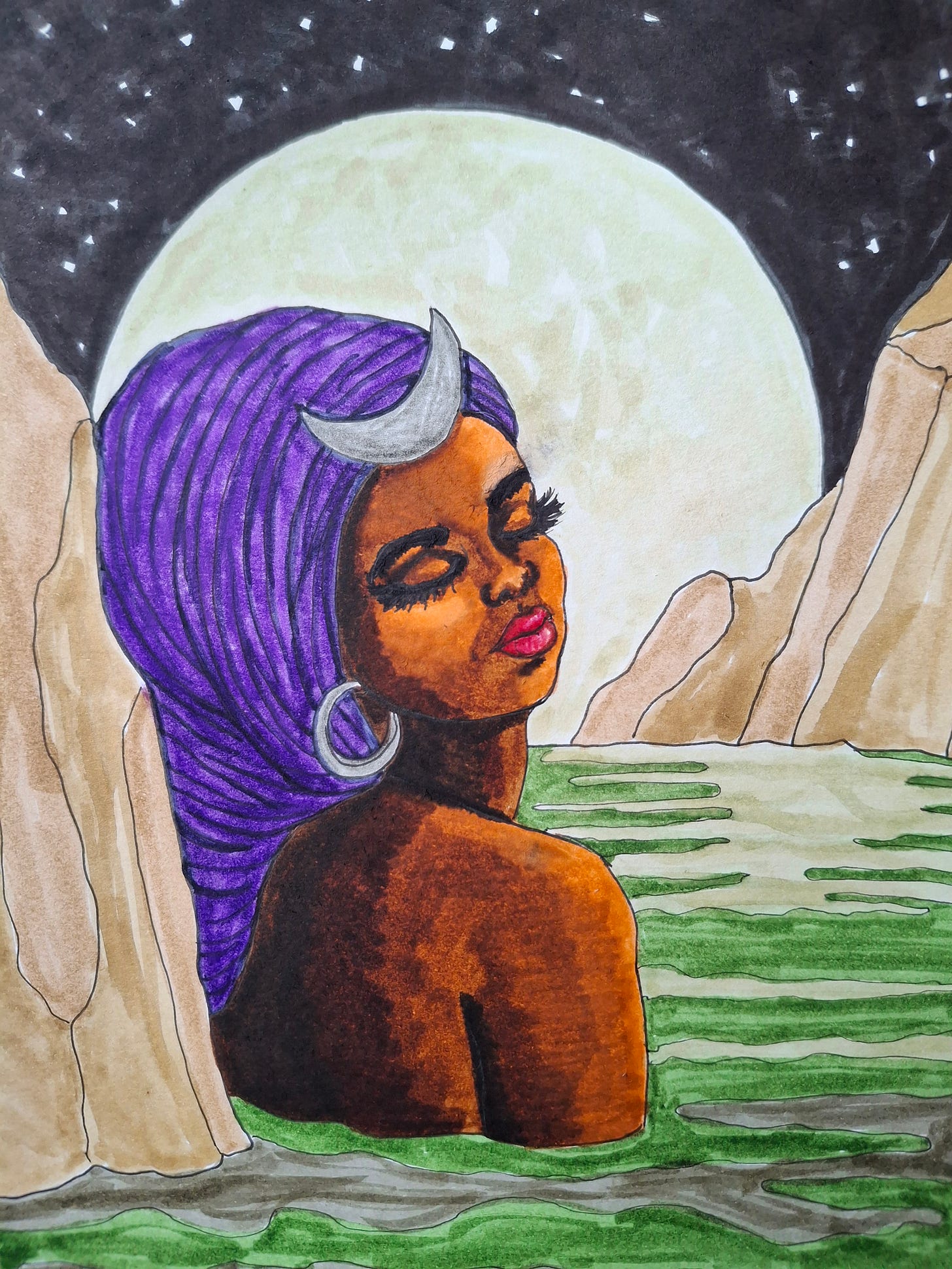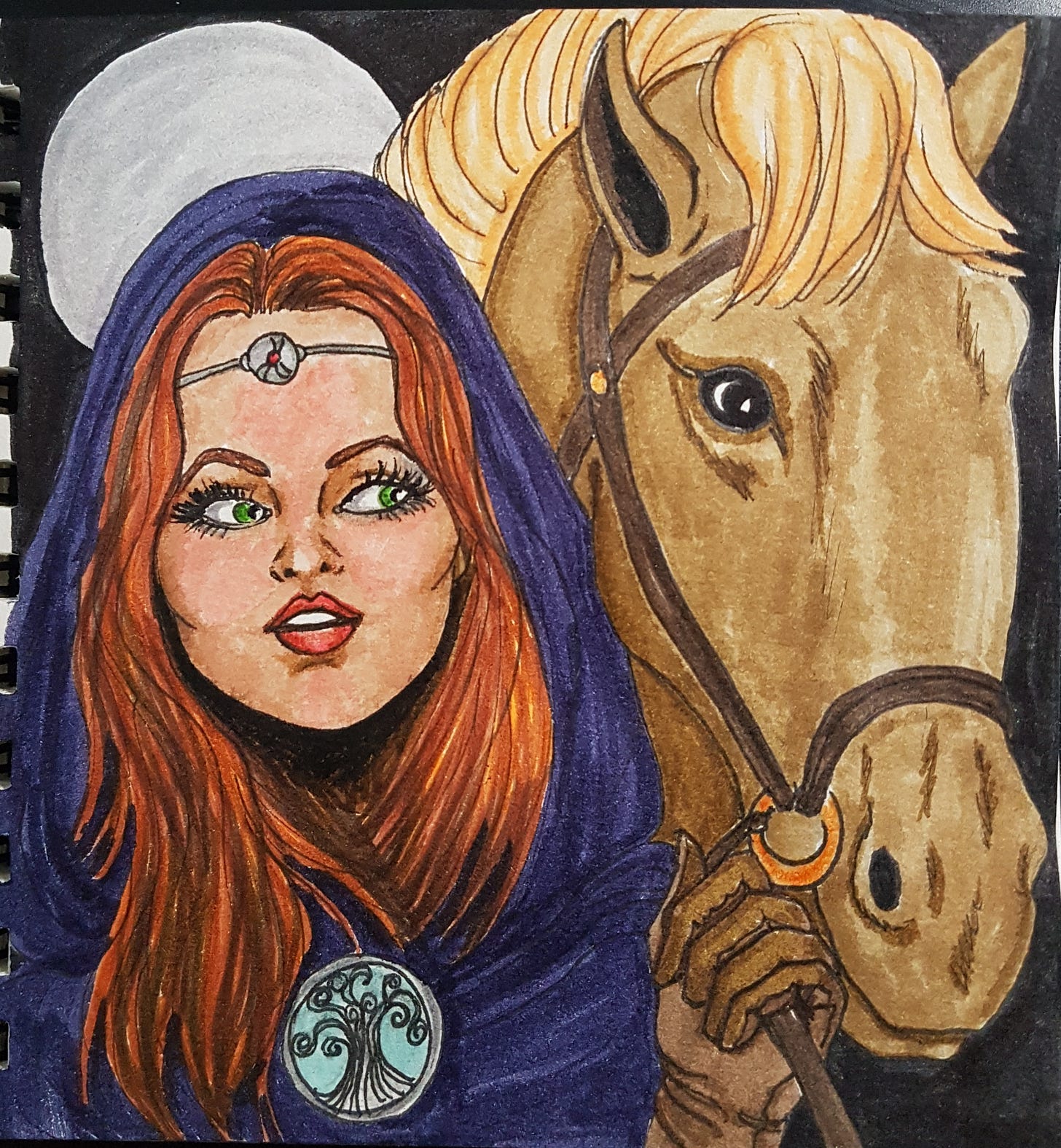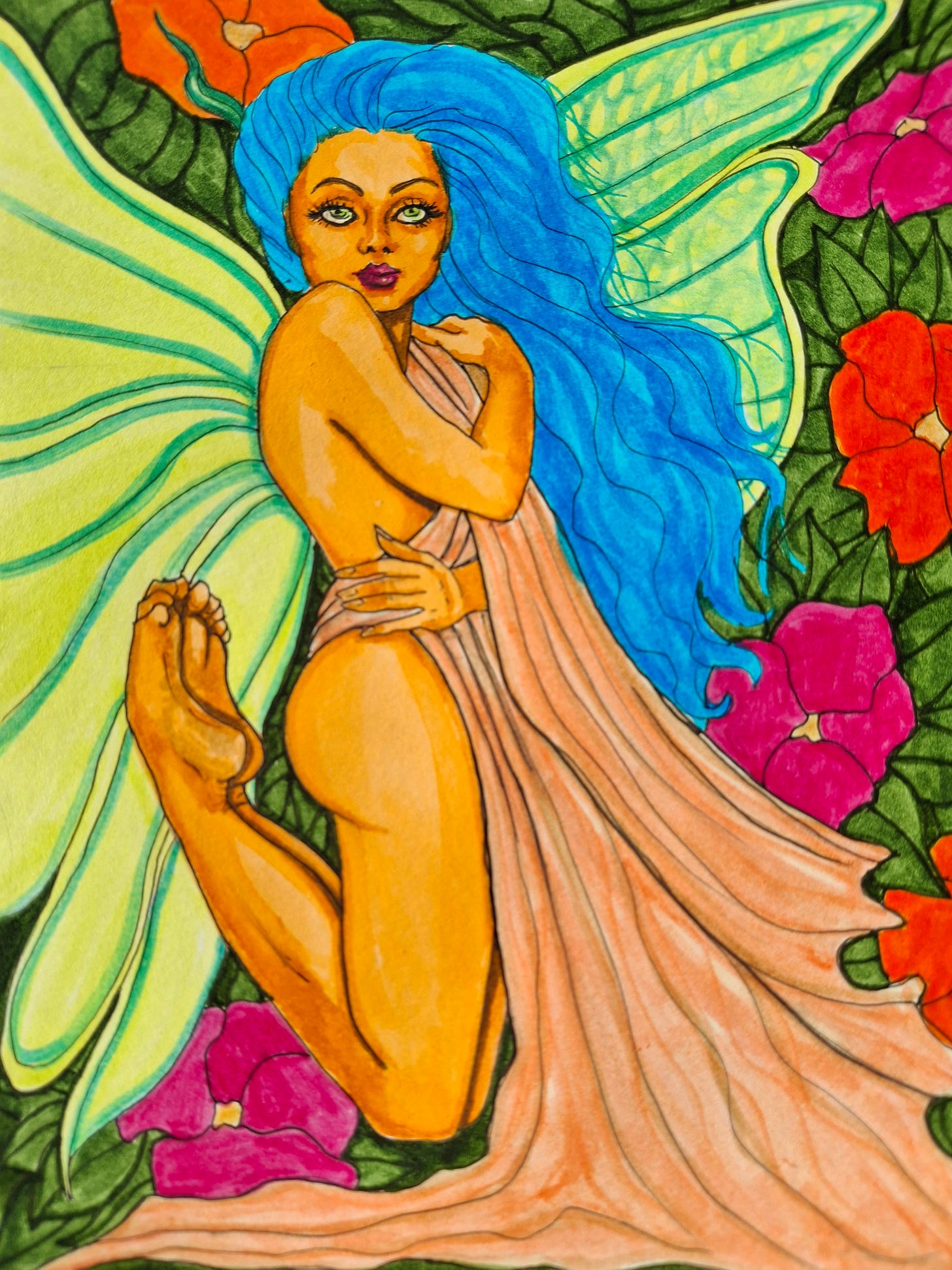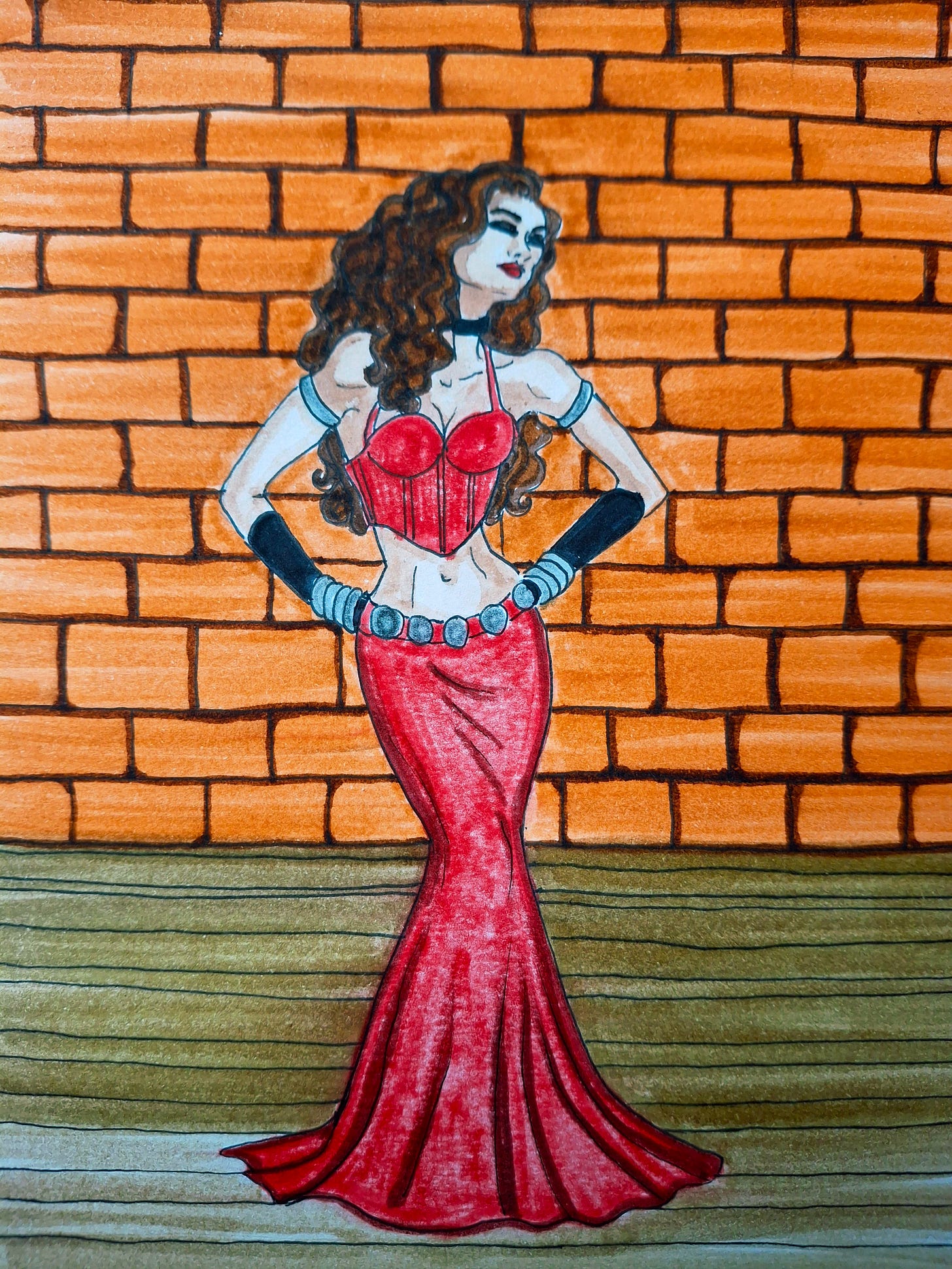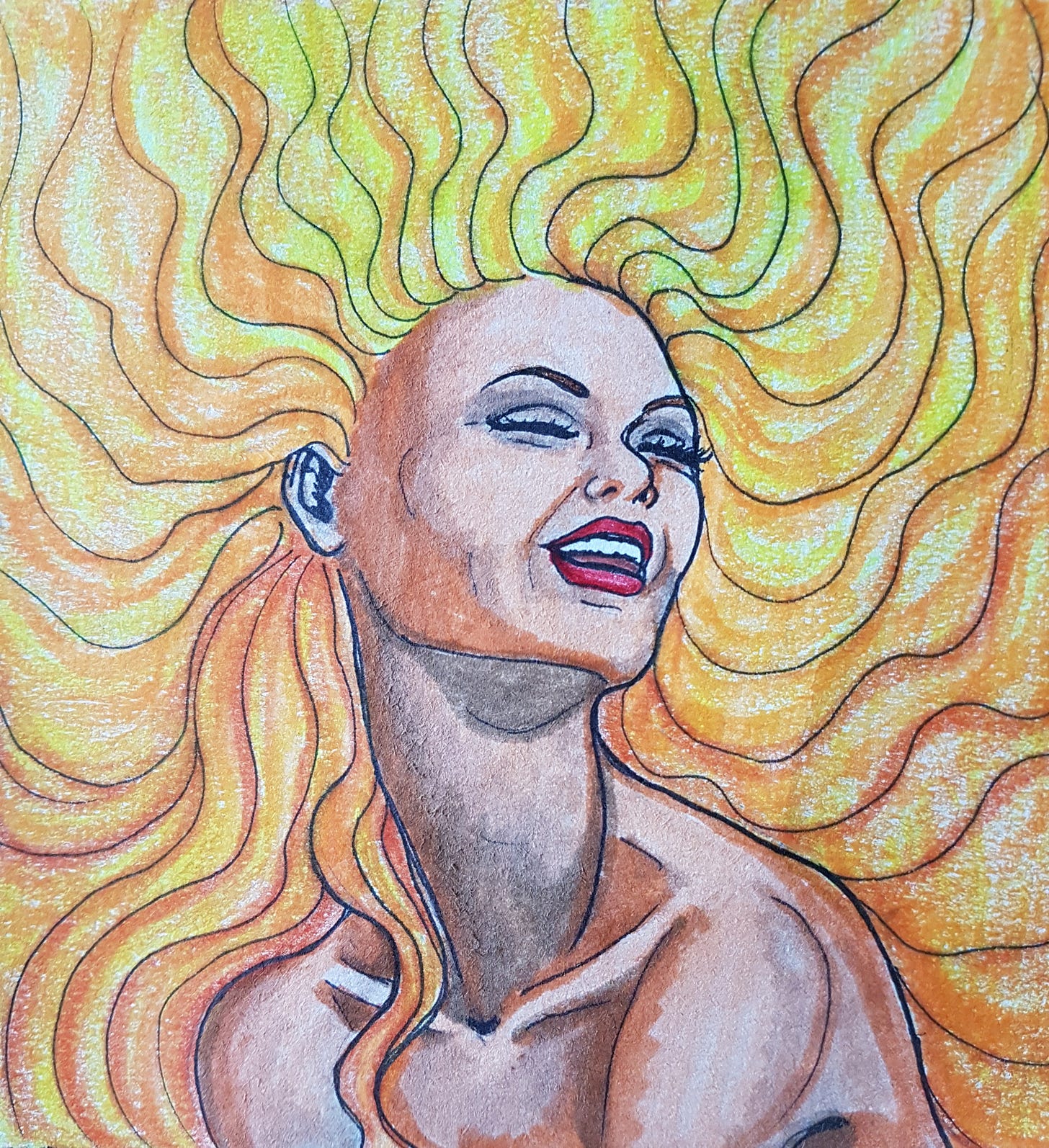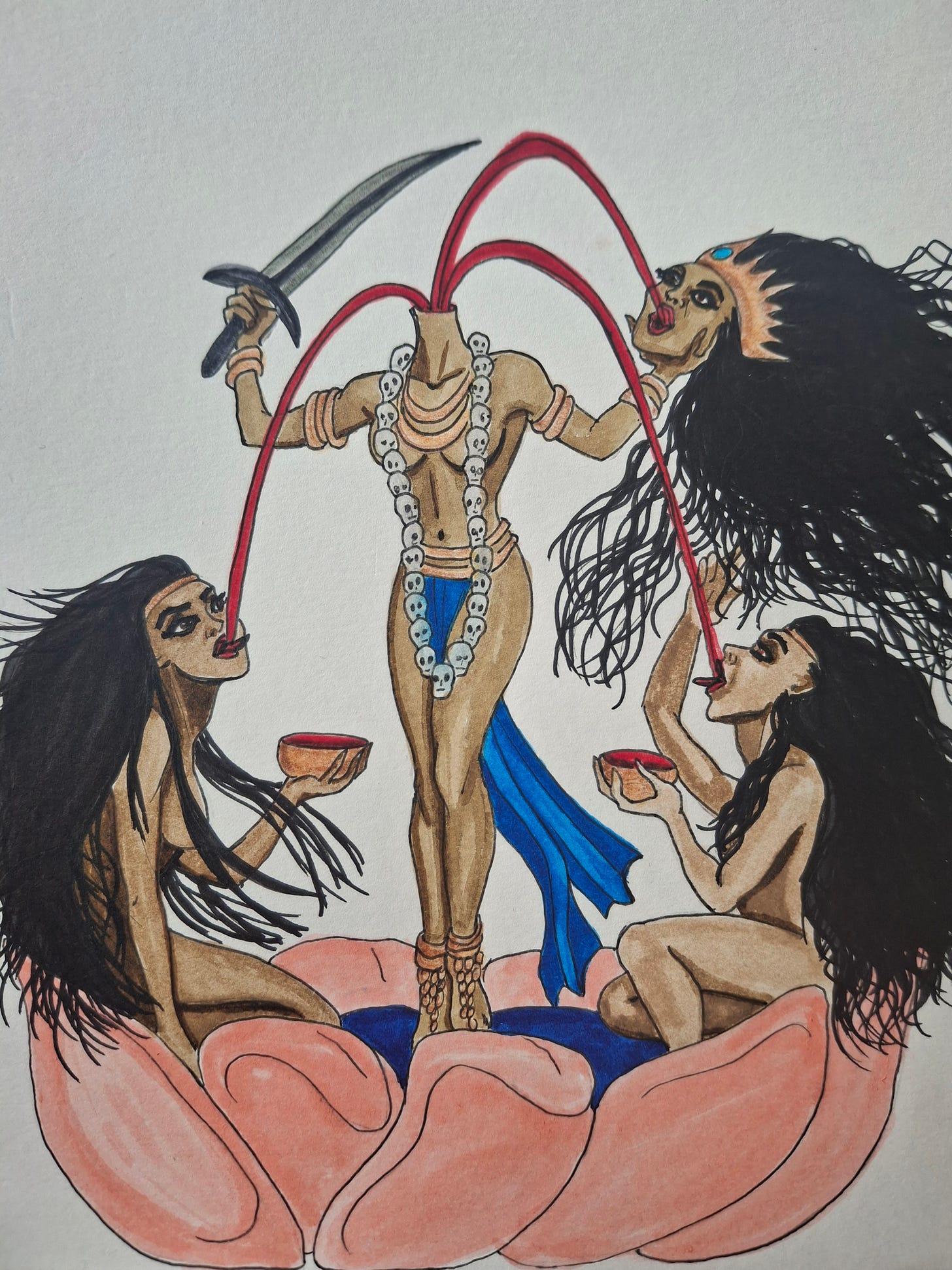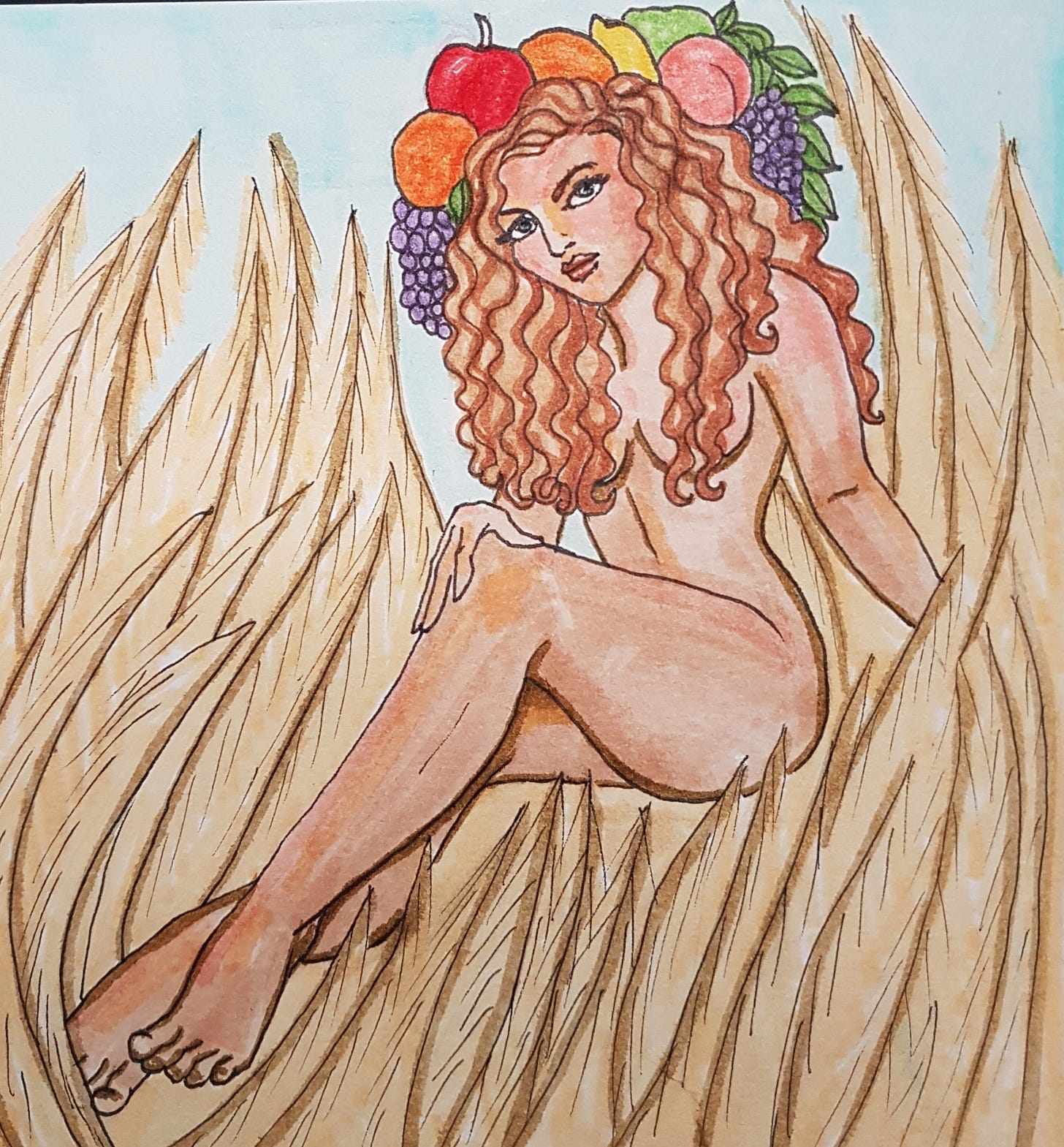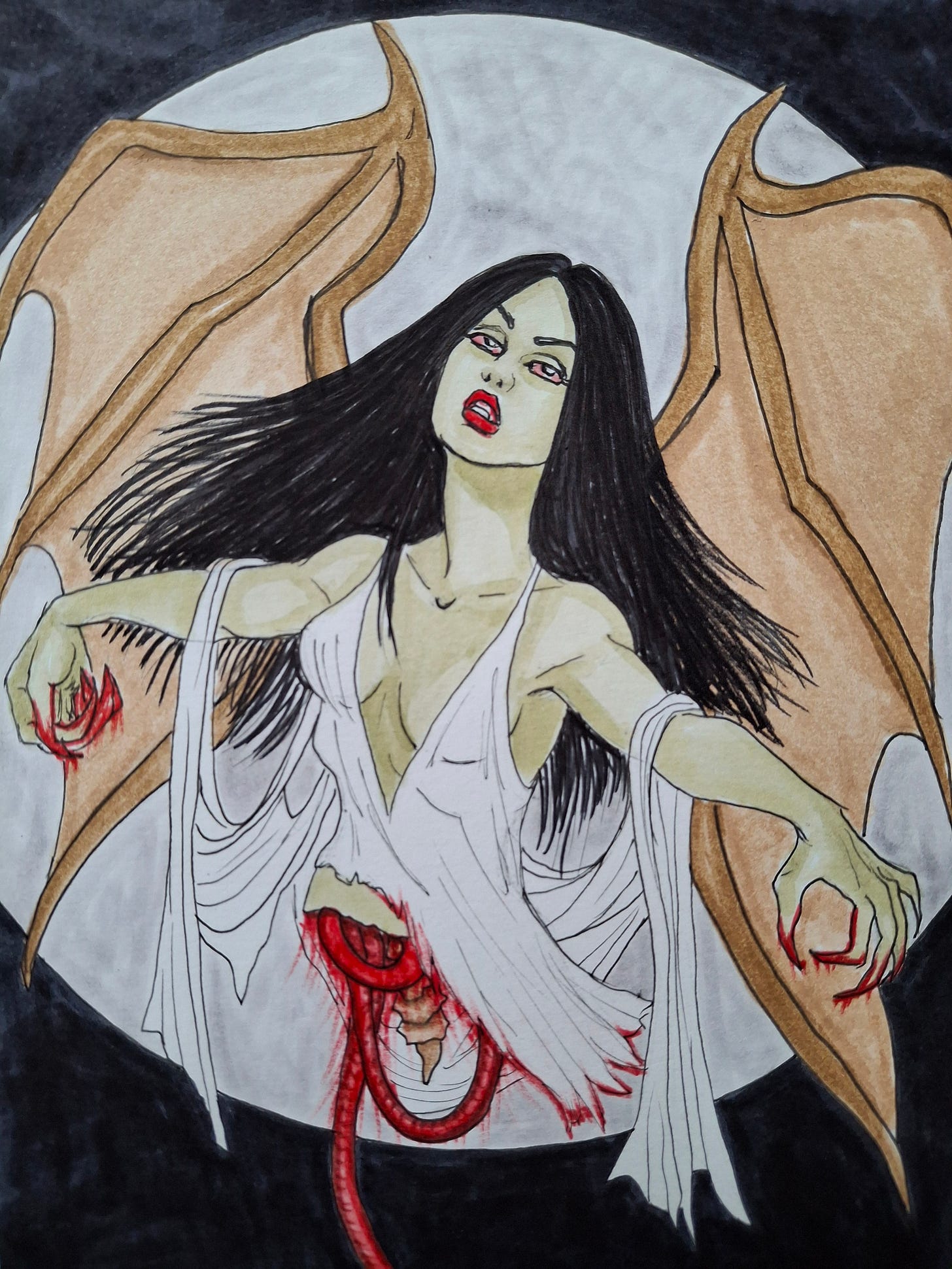The Wheel of the Year
Delving into the eight seasonal festivals of the year...
I’m delighted to announce that my 2026 Badass Goddesses calendar is available for pre-sale now, and begins shipping in mid-November!
On the subject of calendars, this week I’m talking about the Wheel of the Year, the annual cycle of eight seasonal festivals celebrated in Pagan, Wiccan, and other nature-based spiritual traditions.
These festivals mark the peaks and changes of the seasons (solstices and equinoxes) and the relationship between the Earth and the Sun. These eight milestones in the year give us a context for celebrating and coming together to honor the cycles of nature and human life.
Today I’m going to go into a bit of background about the eight festivals and assign a goddess to illustrate the themes of each celebration. Be sure to check out the Starzology podcast, where we’ll be talking about the Wheel of the Year in an upcoming episode. You can subscribe on Spotify and Apple Music.
Perhaps counterintuitively, the first festival of the year starts at the end of the year.
Yule (Winter Solstice): December 21-22
The shortest day of the year (and the longest night) fluctuates between the 21st and 22nd of December, depending on the year and where you are in the world.
At this time, we celebrate the rebirth of the sun and the return of the light. After the winter solstice, days begin to lengthen, even as the season of winter has just begun. Themes include introspection, family, hope, renewal, and the emergence of light from the darkness.
Yule Goddess: Nana Buluku
Nana Buluku is the primordial mother of the universe in the ancient mythological tradition of the Fon people of West Africa. She embodies the deep, quiet mystery at the origin of everything we know.
At Yule, when the Sun is reborn, she represents the great stillness of the womb of creation and the infinite possibilities present in the moment before life emerges.
Imbolc (Candlemas): February 1-2
Imbolc marks the midpoint between winter and spring, as the earth begins to thaw from the long winter. It is traditionally the festival of Saint Brigid, the patron goddess of horses, poetry, healing, and smithing.
Imbolc is a celebration of new beginnings, the first stirrings of life beneath the frozen soil. Themes include inspiration, fertility, cleansing, creativity, and preparation.
Imbolc Goddess: Brigid
The Irish goddess Brigid was syncretized with the Christian saint Brigid of Kildare, who shares many of the goddess’s pastoral, fiery, and healing attributes. Brigid is often considered a triple goddess with three aspects: the goddess of poetry, the goddess of healing, and the goddess of smithing.
At Imbolc, we celebrate Brigid for her qualities of protection and purification. It is a fire festival, so we light the hearth and feast in celebration of the renewal represented by the coming of spring, having survived another winter.
Ostara (Spring Equinox): March 20-21
At the Spring Equinox, the days and nights are equal in length and we celebrate the first day of Spring. This Pagan festival is also associated with the Christian Easter holiday, a time of renewal, revival, and rebirth.
Ostara is celebrated by planting seeds, collecting flowers and eggs (or painting and hiding them for Easter). It is one of the most hopeful times of the year, when life is bursting forth from the earth, and everything seems possible in the light of the lengthening days.
Ostara Goddess: Aine
Aine is the Irish goddess of Summer, sovereignty, fertility, and love, usually associated with midsummer, but she perfectly reflects the themes of balance and renewal which we revere at the festival of Ostara.
Aine symbolizes joy, sensuality, and the power of self-possession, whether over the land you harvest, from which you reap physical rewards, or that which each of us has over our bodies and minds, the ability to live and love as we wish, without restriction.
Beltane (May Day): May 1
Beltane is a fiery festival of passion and love, a wild celebration of the sacred aspect of physical union, fertility, creation, and abundance. It is the midpoint between the Spring Equinox and the beginning of Summer, a time of beginnings and unions.
Themes include love, joy, dancing, fruitful unions and creative energy, an ecstatic ode to all that is fertile and blooming in the natural world around us and within ourselves.
Beltane Goddess: Pomba Gira
Pomba Gira is the Brazilian “sacred harlot,” also called the “queen of the crossroads.” She is a powerful protector and a symbol of feminine power, associated with lust and love, fertility, and independence. Her sexuality is her own, given only on her own terms, making her a patroness of female empowerment.
At Beltane, Pomba Gira represents the power of embodied desire, the ecstasy of being wildly alive. As all of nature is bursting with life and the power of procreation, Pomba Gira invites us to dance with her in the firelight, and give ourselves fully to whatever happens next.
Litha (Summer Solstice): June 20-21
Litha is the festival of the Summer Solstice, the longest day and shortest night of the year. It is also the first day of summer in the Northern Hemisphere. At this festival, we celebrate the Sun at the height of its power, the peak of the solar year.
Themes include abundance, gratitude, the fullness of life and the joy of being outside in nature. Bonfires, dancing, feasting and outdoor rituals of physical activity and endurance in honor of the life-giving Sun.
Litha Goddess: Aurora
Aurora is the Roman goddess of the dawn, equivalent to the Greek goddess Eos, the personification of the morning light. She represents optimism, renewal, beginnings and the fiery, life-giving power of the Sun.
At Litha, we celebrate Aurora by getting outside and giving ourselves over completely to the glory of the solar deity, without whose light there would be no life on earth… no glorious day, no photosynthesis to grow plants, no animals to graze and give their flesh to sustain us, no humans to honor the goddess by turning our faces upward to receive her warming rays.
Lughnasadh (Lammas): August 1
Lughnasadh is the festival of the first harvest, a harbinger of the coming autumn, symbolizing the give and take in our relationship with nature. The harvest is a time when we reap what we have planted, and prepare for times of austerity.
Themes include sacrifice, gratitude, giving, and receiving. It may seem at the start of August that the good times will last forever, but that’s a dangerous illusion. The days are already getting shorter, and soon we will need to draw upon the reserves we now take care to store away.
Lughnasadh Goddess: Chinnamasta
Chinnamasta, the self-decapitating Hindu goddess of paradox, symbolizes Lughnasadh’s lesson that harvest and sacrifice are intertwined. Just as we must reap the grain to feed our communities over the long winter, everything in life is about balancing sacrifice and sustenance.
In the immortal words of Jane’s Addiction, “one must eat the other.” Life feeds life, and death is just part of the cycle. We sacrifice our freedom and finances to raise our children, we donate our time and resources to help those who can’t help themselves, all in the name of the greater good.
Even enlightenment, or education, is a sacrifice of our time and attention, honing our intellect or spirituality into a blade to cut through ignorance. Attaining wisdom involves temporary pain, with the promise of nourishment that not only uplifts us, but enables us to uplift others.
Mabon (Autumn Equinox): September 21–22
Day and night are once again equal at the festival of Mabon, marking the Autumn Equinox and the beginning of the Fall season in the Northern Hemisphere. A time for reflection, letting go of what is no longer needed, and setting intentions for the future.
Themes include gratitude, introspection, reflection, contemplation, meditation, and enjoying the bounty of nature before the change of the seasons and the austerity associated with the coming of winter.
Mabon Goddess: Demeter
Demeter is the Roman goddess of grain and the harvest (analogous to Ceres in Greek mythology), representing the rich abundance of the earth that sustains all life on earth. But her story is also one of sacrifice and loss.
When her daughter, Persephone, was abducted by Hades, the lord of the Underworld, Demeter cast the world into darkness and all the crops failed. In her grief, all the world suffered and starved. A deal was brokered, and Persephone returned for half the year, symbolizing the renewal of spring and the abundance of summer.
We celebrate Mabon by honoring the sacrifice of Demeter, who provides for us in abundance and plenty, but reminds us that life is not all feasting and youthful innocence. If we don’t prepare for the hard times, we’ll suffer when the seasons (and our fortunes) inevitably change.
Samhain (Halloween): October 31
Samhaim (pronounced Sa-When) is the final harvest, marking the beginning of winter, and the time when the veil between the living and the dead is the thinnest. Many cultures have similar festivals around this time, like Halloween and Dia de los Muertos in Latin America.
Halloween is a favorite holiday of modern Pagans, candy-crazed children and adults who love the opportunity to dress up like sexy vampires in the time-honored tradition of their ancestors.
Themes include death, transformation, endings and beginnings, indulging the thrill of being afraid in small doses, in contrast to the overwhelming existential dread that can pervade our everyday lives if we dwell too long on the myriad atrocities and inevitable losses and that come with being alive.
Samhain Goddess: Manananggal
The Manananggal is a terrifying night demon from Filipino folklore who separates her upper torso from her lower body and sprouts bat wings at night. She hunts her unsuspecting human prey until dawn, her favorite being pregnant, sleeping women.
A perfect symbol of the festival of Samhain, the Manananggal represents our deepest fears coming to life to stalk us at our most vulnerable. She also encapsulates the duality of this season, a beautiful woman who transforms into something horrifically monstrous when darkness descends.
But all these festivals, with their costumed extravagance and lurid depictions of horror, have deep roots in psychological and mythological ritual, designed to return our sense of power in the face of the infinite and unknowable.
From trick-or-treating children and giggling teens sharing ghost stories and conducting seances, to costumed revellers bar hopping or participating in the parade of lost souls… We take on the face of that which we fear in order to conquer it. We microdose death to inoculate ourselves against the terror of the real thing.
Badass Goddesses
Thanks for reading, everyone. That wraps up the Wheel of the Year… don’t forget to pre-order your 2026 Badass Goddesses calendar, shipping in mid-November!



